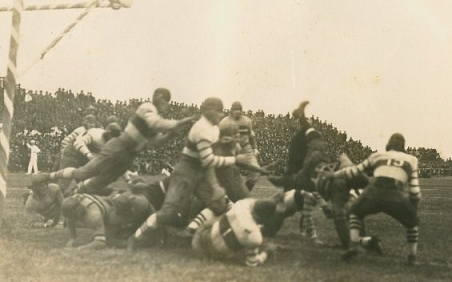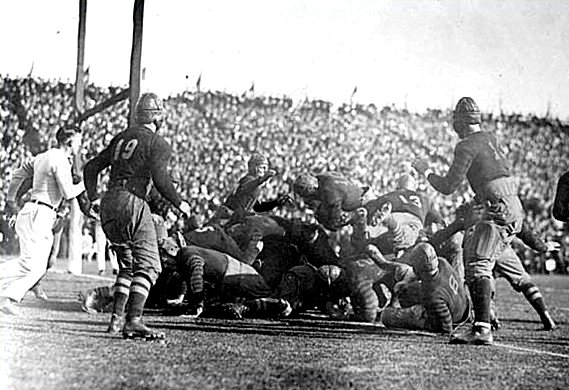
Pictured above is the Harvard touchdown that beat Oregon 7-6 in the Rose Bowl. That put Harvard's record at 9-0-1, a half game better than Penn State's 7-1 in the loss column. Penn State was nevertheless very clearly the consensus choice as Eastern champion amongst Eastern writers in 1919, and in fact Harvard was not considered to be among the top five teams of the East. Decades later, however, when people were selecting national champions for years past, Harvard's 9-0-1 record and Rose Bowl win were presumably all they looked at, and today Harvard is the consensus mythical national champion (MNC) of 1919, while Penn State is not among the 4 teams listed in the NCAA Records Book at all.

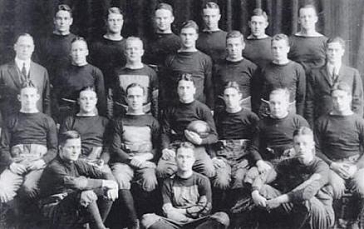
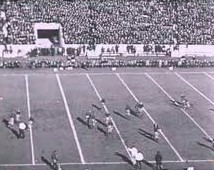
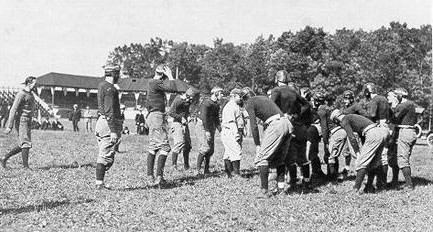
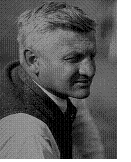 Penn State fielded a pair of strong contenders in 1911 and 1912, but I felt that they came up just short of mythical national championships in both seasons
Penn State fielded a pair of strong contenders in 1911 and 1912, but I felt that they came up just short of mythical national championships in both seasons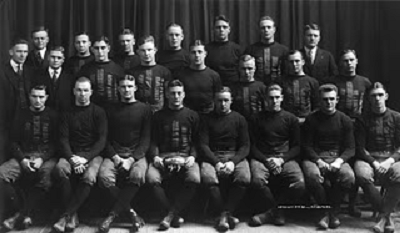
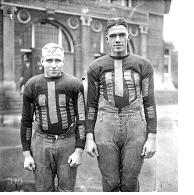 Halfback
Ed "Dutch" Sternaman, the shorter fellow in the picture to the left,
went on to play pro football for 8 years, and was co-owner of the
Chicago Bears with George Halas. Standing next to him was 6' 1" end
Chuck Carney, a consensus All American in 1920 and a Hall of Famer.
Carney was a great receiver, which proved vital in
the big win at Ohio State, and he was versatile enough that Illinois
was able to use him at center when the need arose. He was also an All
American basketball player.
Halfback
Ed "Dutch" Sternaman, the shorter fellow in the picture to the left,
went on to play pro football for 8 years, and was co-owner of the
Chicago Bears with George Halas. Standing next to him was 6' 1" end
Chuck Carney, a consensus All American in 1920 and a Hall of Famer.
Carney was a great receiver, which proved vital in
the big win at Ohio State, and he was versatile enough that Illinois
was able to use him at center when the need arose. He was also an All
American basketball player.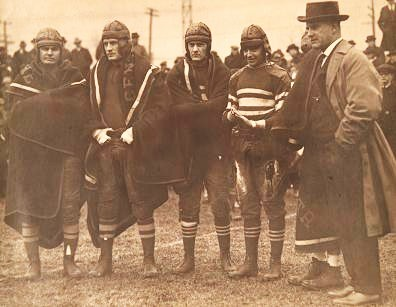
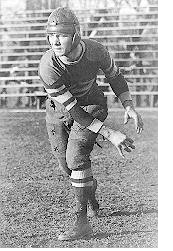 Centre
featured 2 consensus All Americans this season, more than any other
team in the country. The first was their star and captain, Hall of Fame
quarterback Bo McMillin (pictured at left). He was a nonconsensus
AA the next season, and consensus AA again in 1921, when he scored the
32 yard touchdown run that famously beat Harvard 6-0. He was also the
one who had beaten Kentucky 3-0 in 1917, hitting the only field goal he
ever attempted in his career. Because 1918 did not count against
players' eligibility, McMillin started 5 years at Centre. McMillin was
a devout Catholic who did not drink, smoke, or curse, but he was a
prolific and talented gambler, which paid his way through school. He
had little interest in academics, and failed every class his last year
at Centre, so he went into coaching. He beat Harvard again as coach at
Geneva, but he had his most impressive success at lowly Indiana
1934-1947, going 63-48-11 and winning Indiana's first Big 10 title in
1945. Overall, he was 140-77-13 at 4 schools.
Centre
featured 2 consensus All Americans this season, more than any other
team in the country. The first was their star and captain, Hall of Fame
quarterback Bo McMillin (pictured at left). He was a nonconsensus
AA the next season, and consensus AA again in 1921, when he scored the
32 yard touchdown run that famously beat Harvard 6-0. He was also the
one who had beaten Kentucky 3-0 in 1917, hitting the only field goal he
ever attempted in his career. Because 1918 did not count against
players' eligibility, McMillin started 5 years at Centre. McMillin was
a devout Catholic who did not drink, smoke, or curse, but he was a
prolific and talented gambler, which paid his way through school. He
had little interest in academics, and failed every class his last year
at Centre, so he went into coaching. He beat Harvard again as coach at
Geneva, but he had his most impressive success at lowly Indiana
1934-1947, going 63-48-11 and winning Indiana's first Big 10 title in
1945. Overall, he was 140-77-13 at 4 schools.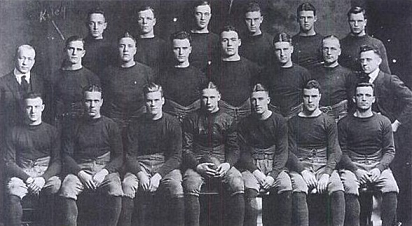
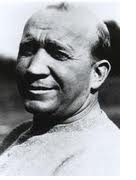 Norwegian-born Knute Rockne (pictured at left) had been a key player on the 7-0
Norwegian-born Knute Rockne (pictured at left) had been a key player on the 7-0 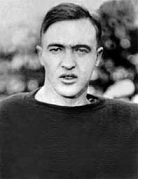 Hall
of Fame halfback and punter George Gipp was Notre Dame's star player
1918-1920. He would be named a consensus All American his senior year,
1920, but he died just 2 weeks after receiving the honor, and in the
process he was transformed from mere mortal to legend. The Vatican has
not yet canonized him, but American culture has, and he has lately
become, according to Notre Dame, "perhaps the greatest all-round player
in college football history." I'm guessing that the "perhaps" is there
for Jim Thorpe, because let's face it, Gipp was not even the best
player of his decade.
Hall
of Fame halfback and punter George Gipp was Notre Dame's star player
1918-1920. He would be named a consensus All American his senior year,
1920, but he died just 2 weeks after receiving the honor, and in the
process he was transformed from mere mortal to legend. The Vatican has
not yet canonized him, but American culture has, and he has lately
become, according to Notre Dame, "perhaps the greatest all-round player
in college football history." I'm guessing that the "perhaps" is there
for Jim Thorpe, because let's face it, Gipp was not even the best
player of his decade.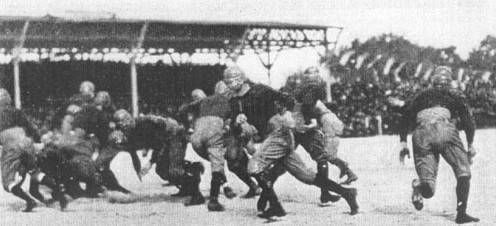
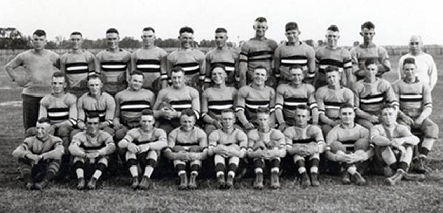
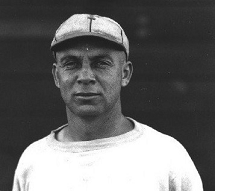 This
was the 6th of 7 straight years that a Southwest team went unbeaten and
untied. Texas A&M had previously taken their turn in 1917, going
8-0, and they were 10-0 in 1919, but in both seasons, the Aggies did
something a little extra
This
was the 6th of 7 straight years that a Southwest team went unbeaten and
untied. Texas A&M had previously taken their turn in 1917, going
8-0, and they were 10-0 in 1919, but in both seasons, the Aggies did
something a little extra